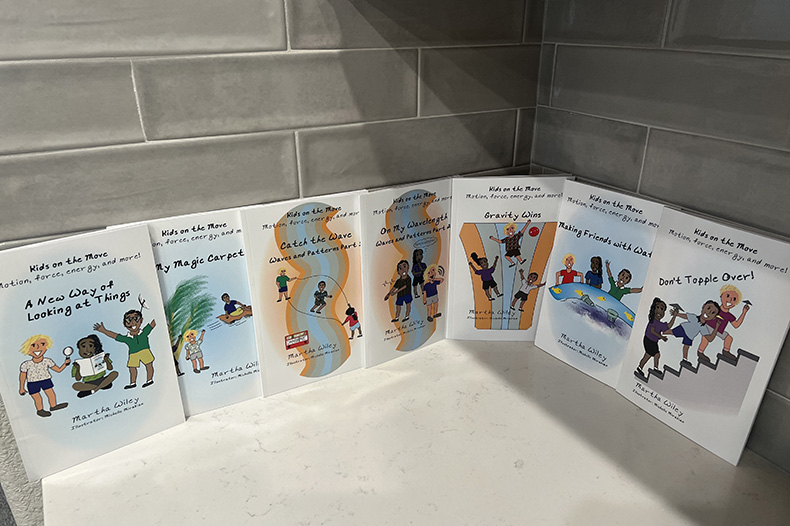Growing up, Michelle Mirakian remembers her mom, Martha Wiley, taking her toys to school sometimes to help teach physical science concepts in her math and science classes.
She also remembers her mom teaching her some of those very concepts at home during playtime.
So, years later, when Wiley set out to write a series of books aimed at helping young children get interested in learning about the physical sciences, Mirakian, who now lives in Olathe, was a natural pick to help bring those stories to life.
Bringing science stories to life
Wiley, a retired math and science teacher from Iowa, had long wanted to fill a need she’d observed in her own classroom years ago, noticing an absence of children’s books designed to help introduce and teach age-appropriate physical science topics.
“The best way to lead into a science lesson with these younger folks would be with a story that kids love and can connect to,” Wiley said.
There were some books out there with that intent, but they mostly focused on life science teaching standards, not physical science.
“Everything I found looked a lot more like an encyclopedia entry or a website vocabulary exercise, not fun stuff,” she said. “I wanted a storyline that felt like MacGyver with guest appearances from Mr. Rogers and Bill Nye.”

Mirakian, who watched her mom struggle to find an illustrator who had enough knowledge about science to illustrate the story effectively, eventually volunteered herself.
“I could envision what she was talking about right away,” Mirakian said, “because a lot of the things that the kids do to play [in the books], this is how I was raised.”
“Kids on the Move” books focus on science in play
The seven-book series, called “Kids on the Move,” centers on a group of three kids — based on students Wiley once taught and tutored — who are experiencing physical science concepts like air and gravity in their own lives.
Wiley said each book begins with a “kid-sized issue or problem” that a young reader might relate to, like scraping your knee after jumping off of the swing. Then, the book explains how gravity pulls objects and people down to the ground.
“It’s a good way to introduce to kids a concept,” Mirakian said. “This gives them more context.”
On top of that, Wiley said physical science components like energy, motion, force and gravity are easy to convert to playtime activities.
“That’s play, that’s childhood,” she said.
Each book also lists out materials a kid could find in their home to help them do the activities depicted in the book they’re reading from the series, like a pencil or things likely to be in their “toy box, backyard or already in the garage or their kitchen,” Wiley said.

What comes next for the series?
Though she’s no longer a classroom teacher, Wiley is still using the books to teach. She’s been out doing readings from the books at after-school programs and library story hours. With those, she likes to replicate some of the activities the characters do in the books with the kids in the audience.
Plus, some school districts have started buying the books to put in their elementary school classrooms.
Down the line, Wiley and Mirakian have plans for at least five more books that will touch on additional physical science concepts in the same style. Additionally, Mirakian is looking at getting the books sold in local bookstores to get them out to more kids.
For now, the books are available on Amazon.
Keep reading: Johnson County native’s new cookbook makes vegetables the ‘star’
发表回复